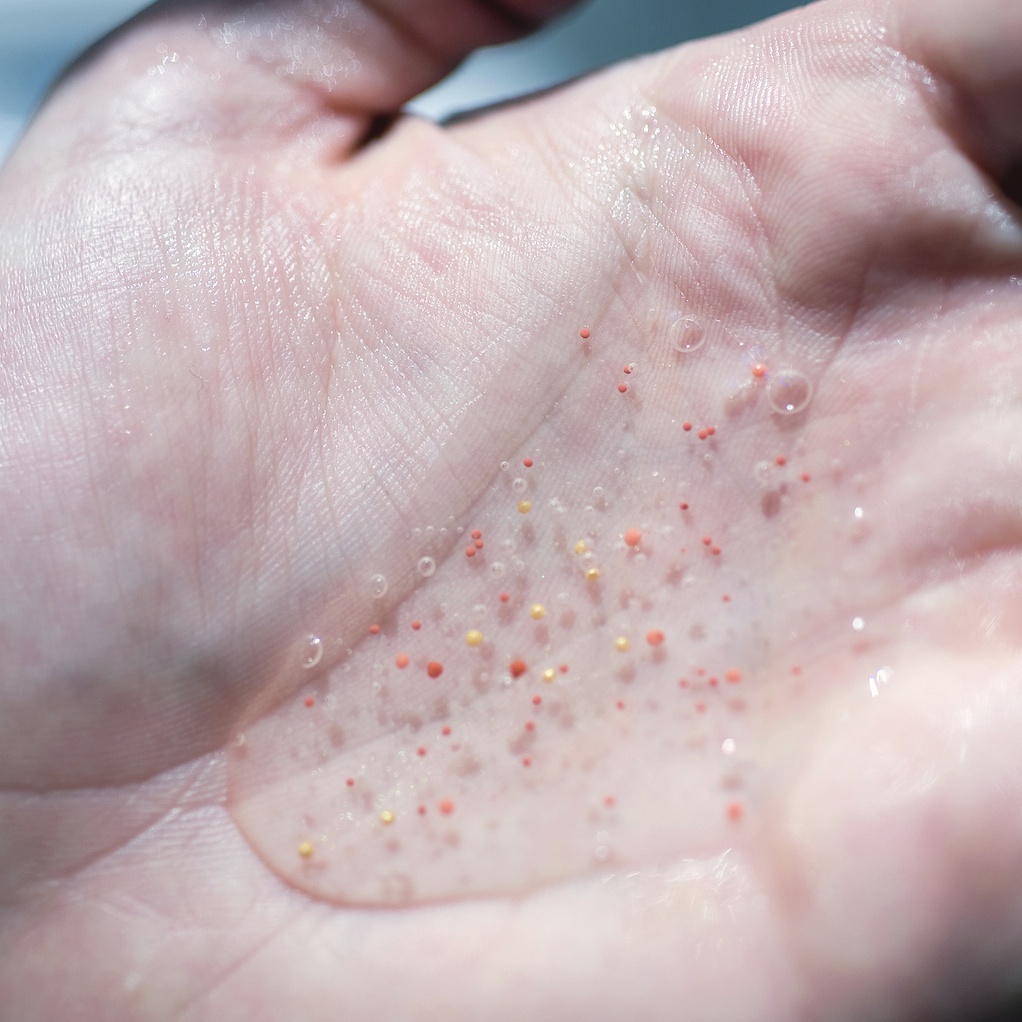Canadians are celebrating the recent news that the federal government is banning microbeads. Environmental Defence has been working hard for a ban since 2014, and this victory wouldn’t have been possible without our supporters.

For more than two years, we conducted outreach to government, worked with scientists and community groups and industry stakeholders, and mobilized tens of thousands of Canadians to write the federal government to get the harmful plastic bids banned.
Microbeads are toxic and unnecessary additions to personal care products like toothpaste and body wash. They may also carry toxic substances such as phthalates and bisphenol-A (BPA) that become adsorbed on their surface, and can be consumed by fish and birds. Every day they continue to be used, microbeads add to the microplastics pollution in the Great Lakes. Researchers from the State University of New York estimate that Lake Ontario contains 1.1 million plastic particles per square kilometre of lake bottom.
Microbeads can easily be eliminated from personal care products and replaced with natural ingredients like almond and apricot shells. Several large companies, including Johnson & Johnson and Loblaw have already taken the lead and announced that they will be ending the use of these microplastics, effectively eliminating economic arguments for delaying a ban on these substances.
So how did we get to this victory?
2014
- In light of concerns raised by scientists and community groups, Environmental Defence starts raising awareness in early 2014. We begin engaging our supporters, and conducting outreach to the Ontario government about impacts on the Great Lakes, and to the federal government about the impact of microbeads on the environment.
2015
- March: In the Ontario legislature, a private member’s bill is introduced to ban microbeads. The Ontario government plans to take action, and starts working with stakeholders on this issue.
- In the same month, Canada’s House of Commons votes unanimously to add microbeads to the nation’s list of toxic substances.
- June: Loblaw, Canada’s largest group of retailers, announces that it will eliminate microbeads, as well as triclosan and phthalates, from its private label products.
- December: the U.S. Congress unanimously passes a bill that bans microbeads from personal products. U.S. President Obama signs the bill into law before the end of the year. It requires that American manufacturers end the use of microbeads in products by July 1, 2017. The law also ends the sale of products containing microbeads in the U.S. by July 1, 2018.
2016
- February: Canada’s newly-elected Federal government opens a public comment period on plans to regulate microbeads under the Chemicals Management Plan. Environmental Defence submits comments and conducts outreach recommending an internationally harmonized definition of microbeads in terms of size, and recommends that no exception be made for “biodegradable” plastics. We engage in discussions with government advocating for alignment with the US definition of a microbead, and for alignment with the US timeline for removing microbeads from the market.
- June: The federal government declares microbeads toxic under the Canadian Environmental Protection Act (CEPA), with an internationally harmonized size definition of microbeads.
- November: Canada announces the draft regulation banning microbeads! The regulation, which is now open for public comment, makes no exception for biodegradable plastics, which are not scientifically supported as an alternative. A final ban will be announced in the summer of 2017; Canada will ban the sale of toiletries used to exfoliate or cleanse containing microbeads by July 1, 2018, and ban the sale of natural health products, non-prescription drugs and toothpaste containing microbeads by July 1, 2019.
2017 and beyond
The ban on microbeads comes at a time a critical time. The House of Commons Standing Committee on Environment and Sustainable Development is currently reviewing the Canadian Environmental Protection Act (CEPA), which is meant to protect human health and the environment from pollution. The review provides us with a generational opportunity to modernize and strengthen this critical piece of environmental legislation. In our testimony to the committee, and in our joint submission with Ecojustice and Equiterre, we have called for improvements to risk management under the act to make sure toxic substances like microbeads are removed from products in a timely manner.
While risk assessments have been completed for many chemicals on the CEPA list of toxic substances, the development and implementation of risk management strategies for many substances assessed as “CEPA-toxic” have yet to be completed or are inadequate. For example, triclosan was declared toxic to the environment under the CMP in 2012, yet no ban or restrictions have been announced to date.
We hope that the swift action on microbeads is a sign that the federal government will be paying closer attention to the problem of toxic pollution. We applaud the decision to ban microbeads. The next step will be to fix the law so that toxic chemicals don’t wind up in the environment in the first place.









